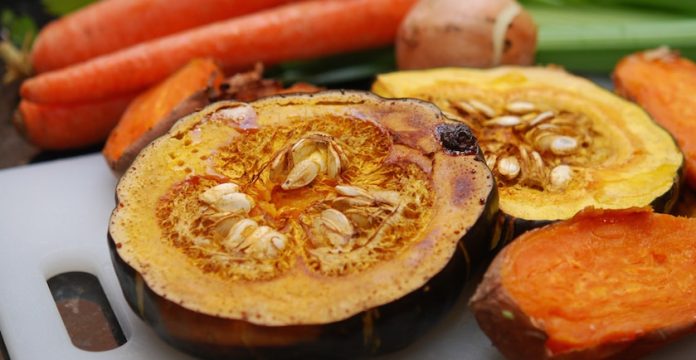
The leaves are falling, so why not celebrate the season with hearty, autumn vegetables? Squash, turnips, pumpkins, parsnips, beets,
rutabaga and more! These delicious vegetables are now in abundance and
nothing brings out their sublime sweetness better than a little sea
salt, pepper, olive oil and a heated oven. High-heat slow roasting is a simple cooking method that intensifies the flavor of these hearty root vegetables
without adding extra fat and calories. It’s easy to create a colorful
array of caramelized vegetables – crisp and brown on the outside, soft
and tender in the inside – with these helpful kitchen tips.
Read about unconventional ways to add sweet potatoes to your diet
- Roast vegetables at 450 F.
- Use shallow pans (such as baking sheets) and don’t overcrowd vegetables. This allows vegetables to brown rather than steam.
- Oil
is absolutely necessary. Without oil, vegetables will burn and their
flavor will not develop. You need just about ½ tablespoon per pound of
vegetables. A high quality, cold pressed olive oil is best.
- Toss vegetables during roasting; they’ll stay coated with oil and won’t dry out.
- Choose four or five different vegetables for a good mix of flavors. Don’t be timid about experimenting with different combinations – anything goes!
- Some
vegetables cook faster than others. If combining different vegetables,
cut quick-cooking vegetables, such as sweet potatoes, into larger
chunks. Cut parsnips, turnips, and rutabaga into medium-size chunks, and
cut slow-cooking vegetables, such as carrots and potatoes, into smaller chunks.
- If adding fresh herbs for additional flavor,
choose sturdy herbs such as rosemary, oregano or thyme. Leafy herbs
such as parsley, cilantro or dill should not be added during the cooking
process but sprinkled on after vegetables are cooked as they will
crinkle and brown in the oven.
Read more about heirloom squash varieties to try this autumn
Image via Vanessa Druckman




